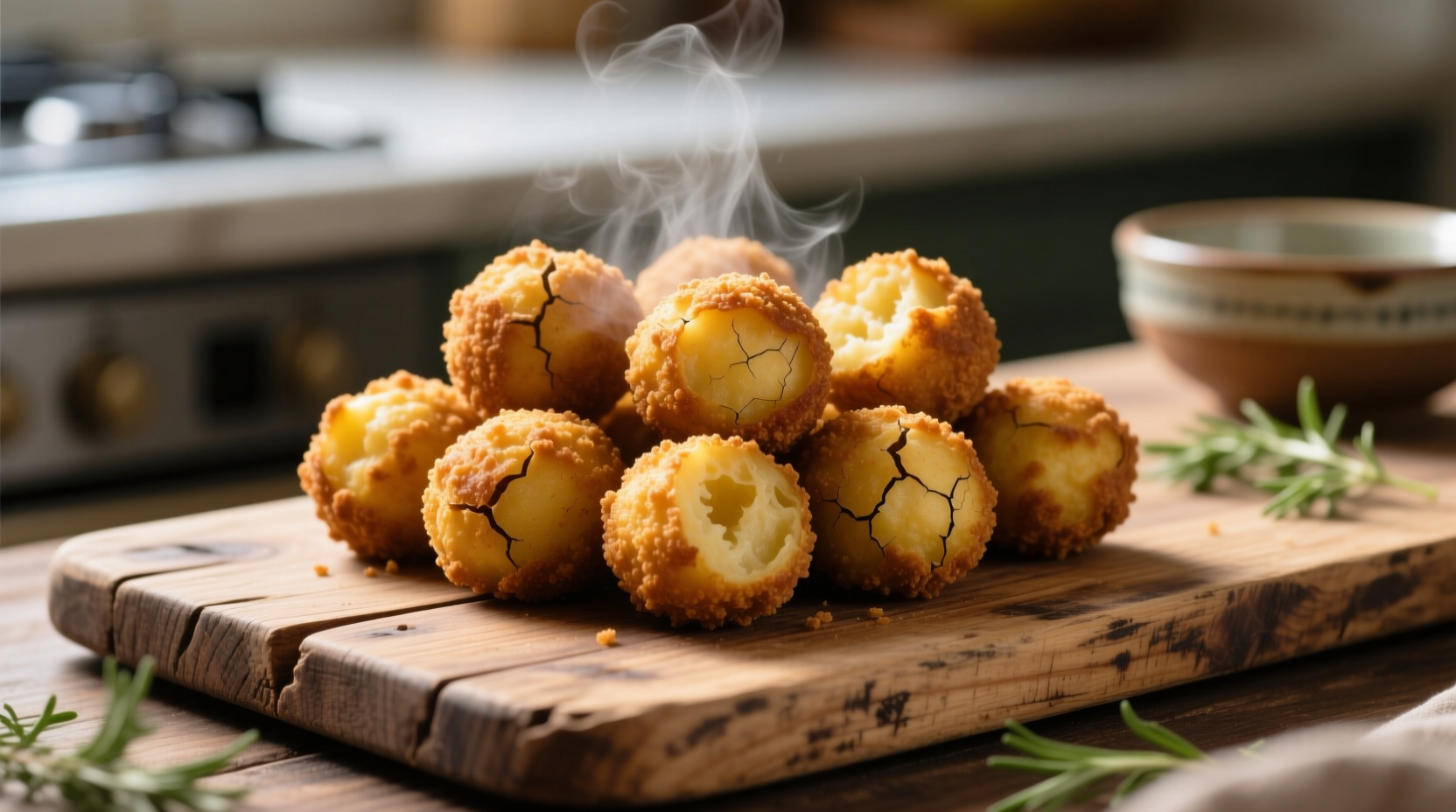Originating in France during the late 19th century as an elegant solution for leftover mashed potatoes, potato croquettes have evolved into a global comfort food staple. These cylindrical fritters combine smooth mashed potatoes with binding agents, coated in breadcrumbs and deep-fried to golden perfection. The ideal croquette features a shatteringly crisp exterior that gives way to a velvety interior without greasiness—a balance achieved through precise ingredient ratios and temperature control.
The Essential Croquette Anatomy
Understanding the structural components prevents common failures. Professional kitchens maintain strict proportions:
| Component | Traditional Ratio | Critical Function |
|---|---|---|
| Potatoes (russet or Yukon Gold) | 75% | Provides starch foundation and creamy texture |
| Binding agent (béchamel or egg) | 20% | Creates structural integrity during frying |
| Flavor enhancers | 5% | Seasoning without compromising texture |
This ratio, verified by culinary researchers at the Culinary Institute of America (ciachef.edu), prevents the two most common failures: disintegration during frying (insufficient binder) and rubbery texture (excess binder).
Mastering the Preparation Sequence
Follow this chef-tested workflow for optimal results:
1. Potato Selection and Cooking
Choose starchy potatoes like Russets or Yukon Golds. Boil unpeeled to prevent water absorption, then pass through a ricer while hot. Never use a food processor—this activates excess starch causing gumminess. The University of California Cooperative Extension confirms that mechanical mashing increases gelatinization by 40% compared to hand-ricing (ucanr.edu).
2. Binding Technique
For authentic French-style croquettes, prepare a thick béchamel (1 part butter, 1 part flour, 2 parts milk) cooled to room temperature before incorporating potatoes. Japanese korokke often uses egg as the primary binder. The critical temperature threshold: binders must be completely cool before shaping to prevent oil absorption during frying.

3. Shaping and Coating Protocol
Chill mixture for minimum 2 hours before shaping. Professional kitchens use a piping bag with star tip for uniform cylinders. The three-stage coating process (flour → egg wash → panko) requires specific timing:
- Flour coating: 30 seconds immersion
- Egg wash: 15 seconds drainage
- Panko application: Gentle press without compaction
Avoiding Common Pitfalls
Even experienced cooks encounter these issues:
Oil Temperature Management
Maintain 350°F (175°C) using a calibrated thermometer. Lower temperatures cause oil saturation; higher temperatures burn coating before interior heats. The American Oil Chemists' Society confirms that optimal frying occurs between 325-375°F for starch-based foods (aocs.org).
Freezer Technique
Flash-freeze shaped croquettes on parchment-lined tray for 30 minutes before final coating. This prevents deformation during handling and creates a protective barrier against moisture migration.
Global Variations Decoded
Cultural adaptations reflect local ingredients and techniques:
| Cuisine | Distinctive Features | Key Ingredient Variation |
|---|---|---|
| French | Cylindrical shape, fine breadcrumbs | Béchamel binder, parsley garnish |
| Japanese (Korokke) | Flatter oval, panko coating | Ground meat addition, tonkatsu sauce |
| Dutch (Bitterballen) | Spherical, thicker coating | Beef broth reduction, mustard pairing |
Serving and Storage Guidelines
Serve immediately after frying for optimal texture. For meal prep: cool completely, then freeze in single layer before transferring to airtight container. Reheat in 400°F oven for 12-15 minutes—never microwave, which destroys crispness. Properly stored croquettes maintain quality for 3 months frozen.
When Croquettes Aren't the Solution
Understand these context boundaries:
- Not suitable for low-carb diets (45g carbs per serving)
- Requires precise temperature control—unsuitable for air fryers without oil spray
- Leftover mashed potatoes with high moisture content (>70%) will fail
- Not recommended for deep-frying novices without thermometer











 浙公网安备
33010002000092号
浙公网安备
33010002000092号 浙B2-20120091-4
浙B2-20120091-4